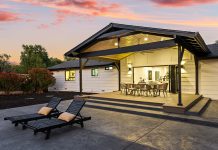The Sonoma County Fair begins its 83rd running today (Aug. 1 through 11) offering all of us a mid-summer showcase of both our agricultural roots and our more contemporary wine country trappings and pursuits. A Hall of Flowers, evening concerts, daily youth livestock judging, horse races, carnival rides, craft beers, cotton candy and fried everything — what’s not to like?
Since the first fair and agricultural exhibition was held at the Santa Rosa Fairgrounds in 1936, our county has more than tripled in population and new cities like Rohnert Park and Windsor have been built on land that was once a seed farm and hundreds of acres of hop vines. We know the landscape has changed but Sonoma County is still predominantly farm country. Our collective ag industries, led by winegrapes, is our biggest economic sector. Also, our second largest industry, tourism and hospitality, owe nearly their entire existence to our farms, farmers, crops and ag production. It is also thanks to productive farms that Sonoma County remains so beautiful with cultivated orchards and vineyards, preserved open spaces, rural expanses and a durable appreciation for good soil, land stewardship and our pleasing weather.
Fairgoers and the rest of us should know our agriculture heritage and ag industries should not be taken for granted. The same time our county was tripling in population, other regions of the Bay Area were doing the same — only their land use patterns were very different and regrettable to many. While our farmers were replanting many of their prune orchards over to winegrapes, places like Walnut Creek and San Jose were pulling out all their orchards and “planting” houses, subdivisions and new industries.
Just as the fertile valley surrounding Santa Clara and San Jose is now Silicon Valley and nearly absent any farms or commercial ag production, the same fate could have fallen to Sonoma County. Why didn’t it?
When the Golden Gate Bridge opened the year after the first Sonoma County Fair in 1937 and Highway 101 was widened and realigned through the middle of Marin and Sonoma counties, all manner of enterprising power brokers, suburban schemes and races for new riches followed. Lying in the path of all these Golden California dreams was our farms. How did we manage to save as many as we still have today?
At one point, a four-lane highway was drawn along our Marin and Sonoma ocean coast, with plats of future subdivisions and commercial centers with ocean views imagined. This was when PG&E was digging a deep hole at Bodega Bay to locate a nuclear power plant. Some people called the proposed byway the Atomic Freeway. (PG&E abandoned its plan in 1964 when the San Andreas Fault was discovered beneath the proposed site.)
In 1972, Petaluma was facing intense pressure to alter its surroundings from dairy farms and chicken ranches into a checkerboard of subdivisions to house all the thousands of commuting workers with jobs on the other side of the Golden Gate Bridge. The city enacted the nation’s first Growth Management Plan, limiting its growth to 500 homes per year and within strict development zones. The plan was challenged all the way to the U.S. Supreme Court but was affirmed.
In 1978, the county drafted a new General Plan. The plan would require infill growth around existing cities while preserving 9,600 acres of “community separators.” Development on lands designated as ag or rural was strictly limited. Over time, these rural lands became more valuable for growing crops than building houses.
In 1990, the voters of Sonoma County approved a ¼ cent sales tax to fund the Sonoma County Agricultural Preservation and Open Space District, which has placed 110,000 acres in permanent ag production or natural habitat.
This year’s fair theme is “Back to our Roots in Cowboy Boots.” It makes for a nice rhyme but we don’t see where Sonoma County ever left its ag roots in the first place.
— Rollie Atkinson









